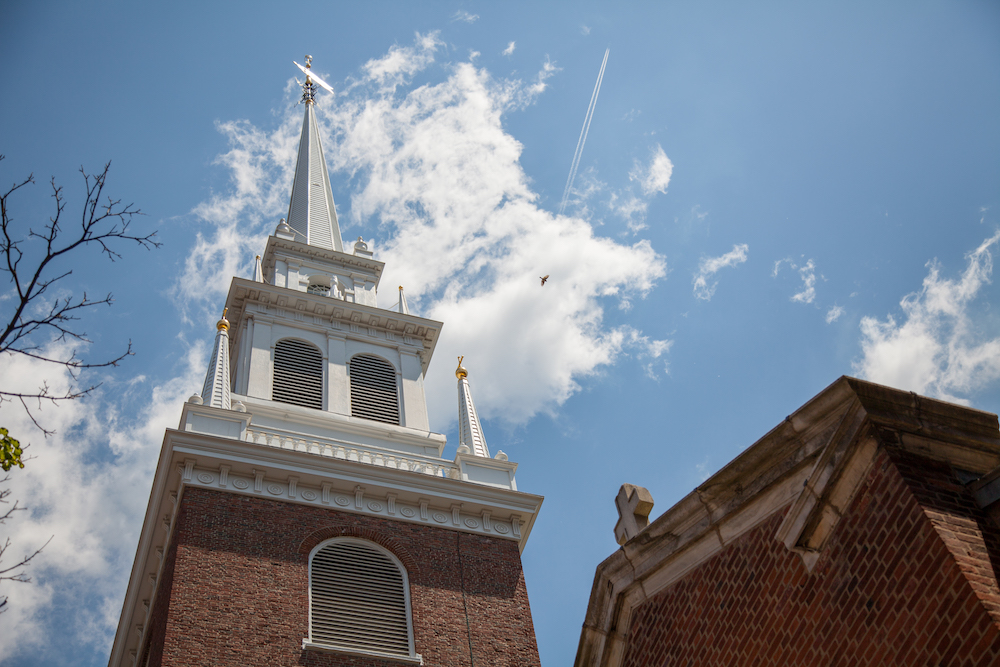Story of the Steeples
The Story of Old North’s Steeple(s)
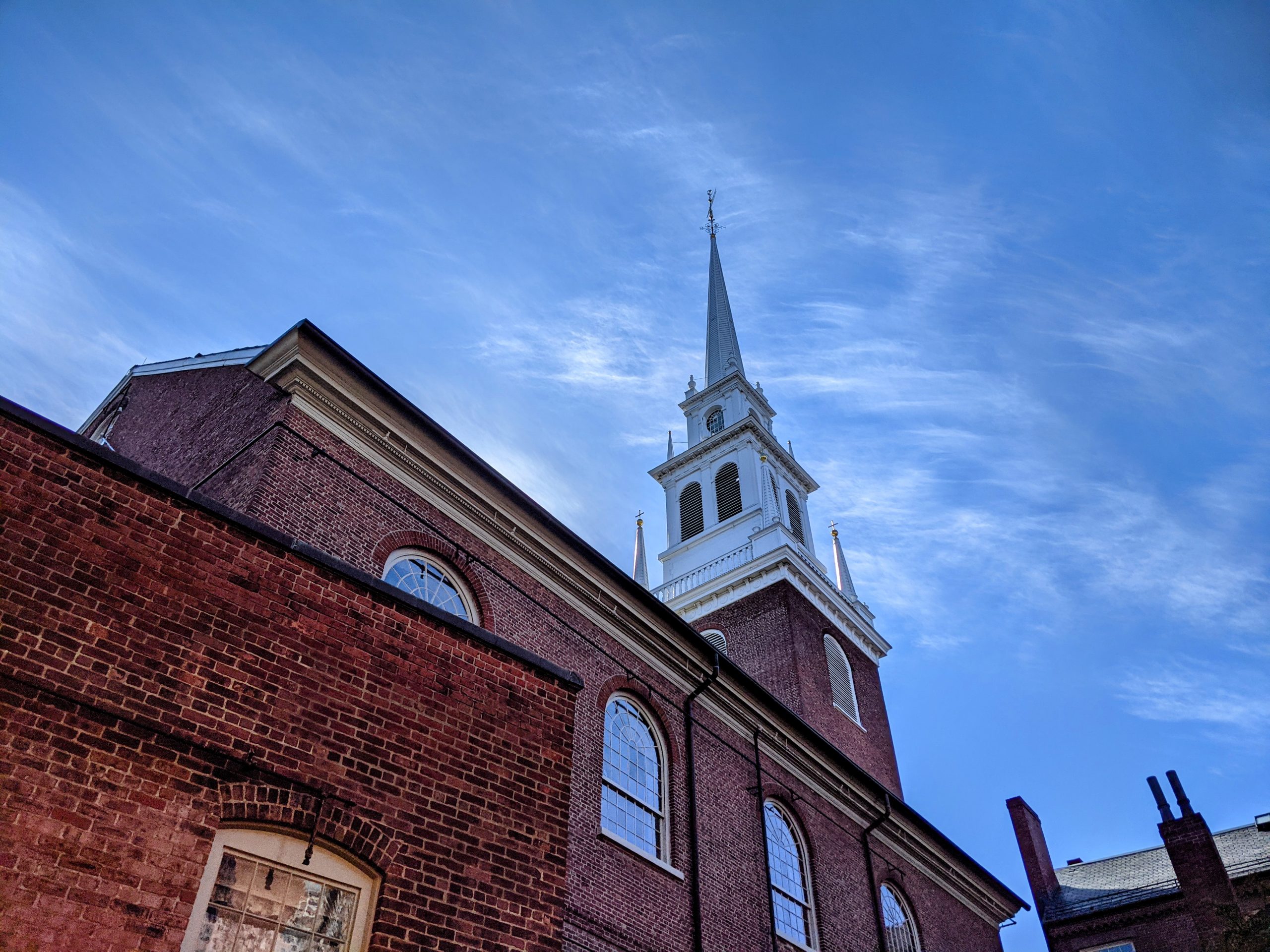
Old North’s iconic steeple may be one of the most memorable images along the Freedom Trail—but did you know that the steeple you see today is actually Old North’s third steeple? Yes, that’s right! Not once, but twice, powerful storms have blown down the spire (the wooden section atop the brick tower), resulting in community efforts to rebuild. The story of the steeple is a story of teamwork, commitment, and active citizenship over the centuries. It is also a story that invites us to reflect on the complexity of Old North’s past.
Explore the church’s steeples through the centuries!
The First Steeple
For Old North’s first 17 years (1723-1740), there was no wooden spire on top of the brick tower. Imagine how different it must have looked! In 1737, church leaders began a subscription campaign to collect money to fund the construction of the spire. A large early gift came from a group known as “The Gentlemen of the Bay of Honduras” who donated a ship’s entire cargo load of logwood, a valuable commodity grown in the tropics. The church sold the logwood and put the proceeds in the fund. Other supporters and congregants made gifts—some larger, some smaller—as well. In the summer of 1740, the wooden spire was built in a nearby field. Workers hoisted it onto the tower and then celebrated with a feast. The finished steeple, topped with a golden weathervane, made Old North the tallest structure in Boston. Its impressive height and elegance were a statement by the young congregation.
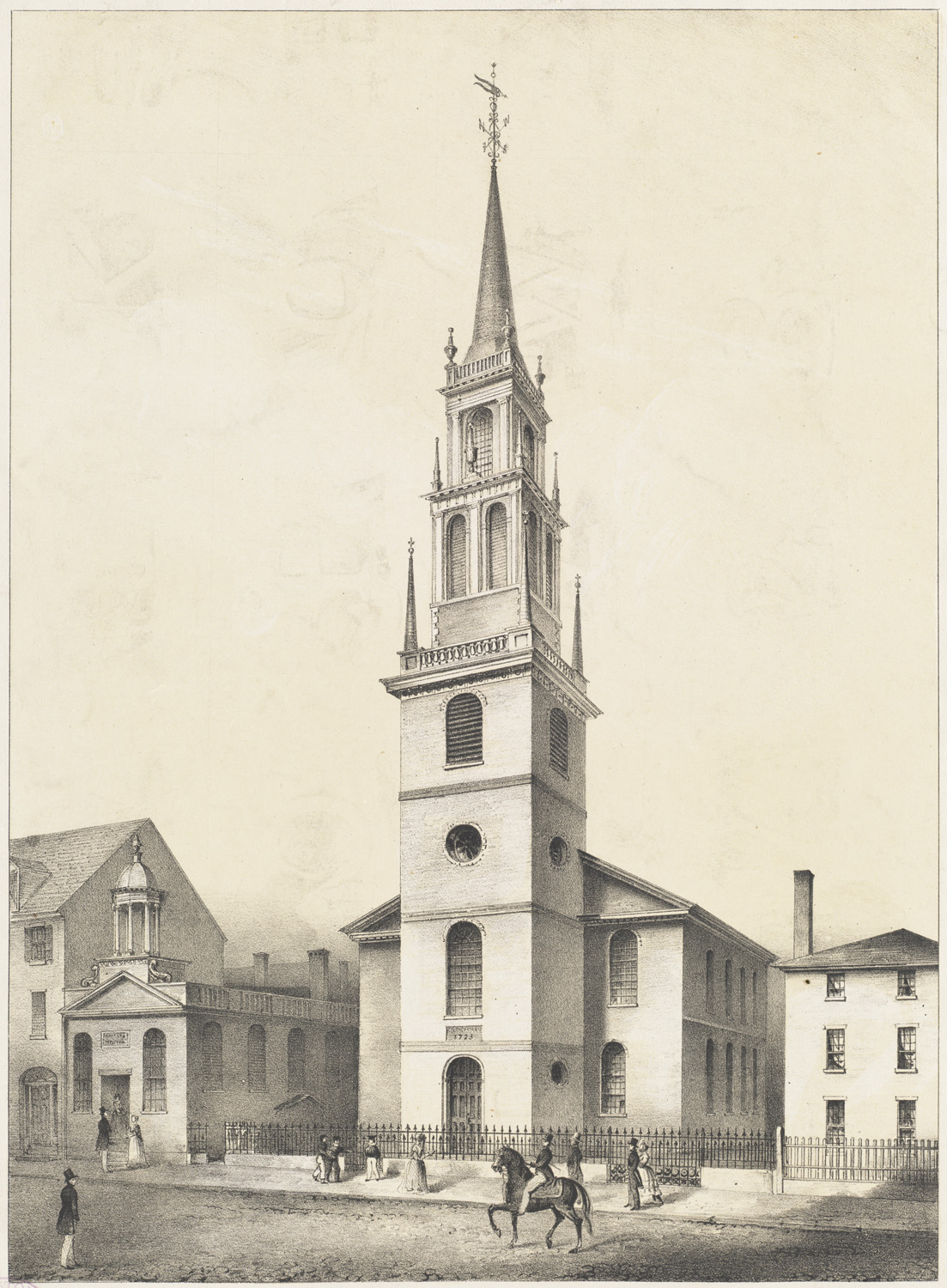
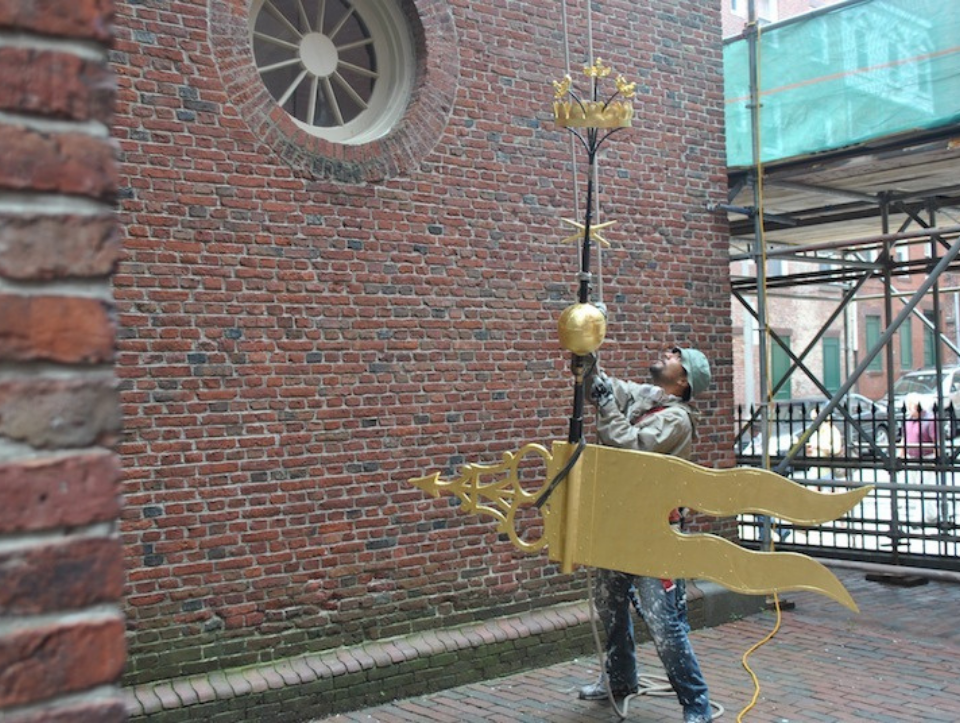
The Weathervane
Topping the Old North steeple(s) for almost 300 years is the golden weathervane created by Shem Drowne. Drowne made some of the most iconic weathervanes of the colonial era, including the grasshopper that graces Faneuil Hall.
“One if by Land, Two if by Sea”
The first steeple was the one that Paul Revere knew as a boy (and bellringer) and later incorporated into his lantern signal plan. Because of the spire’s height, any light shining from the topmost windows would be visible to Revere’s fellow riders watching from the far side of the Charles River. The plan worked perfectly. On April 18, 1775, two lanterns shone from the steeple and lit the way to revolution.
The lantern story offers some thought-provoking contradictions. Old North was an Anglican church–the King’s church–and yet it was used to subvert the King’s power and rule. Secondly, the signal transformed Old North’s steeple into a symbol of freedom: yet, it was funded in part by the proceeds of enslaved labor, such as the logwood donated by the Gentlemen of the Bay of Honduras. The steeple, like the nation itself, has a complex history to tell us.
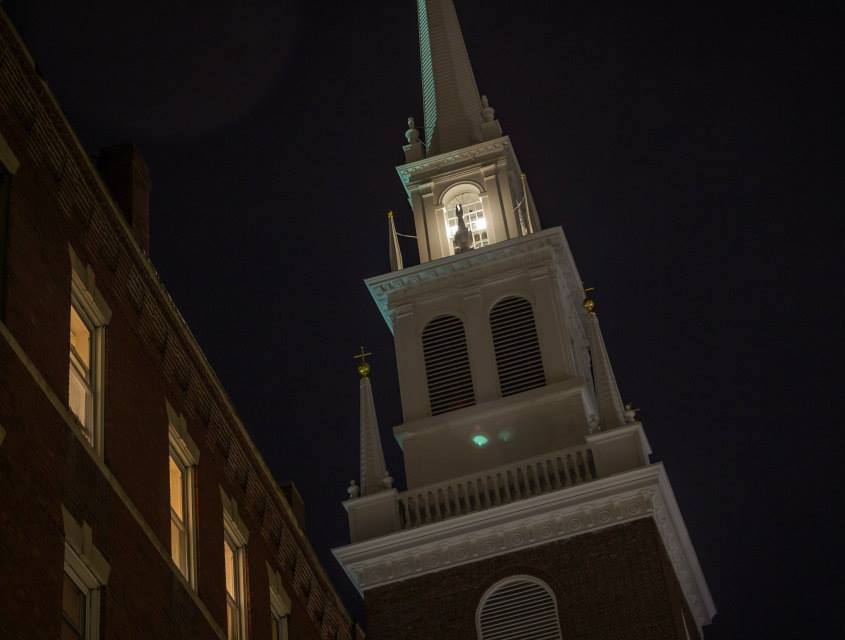
The Great Gale of Boston and the Second Steeple
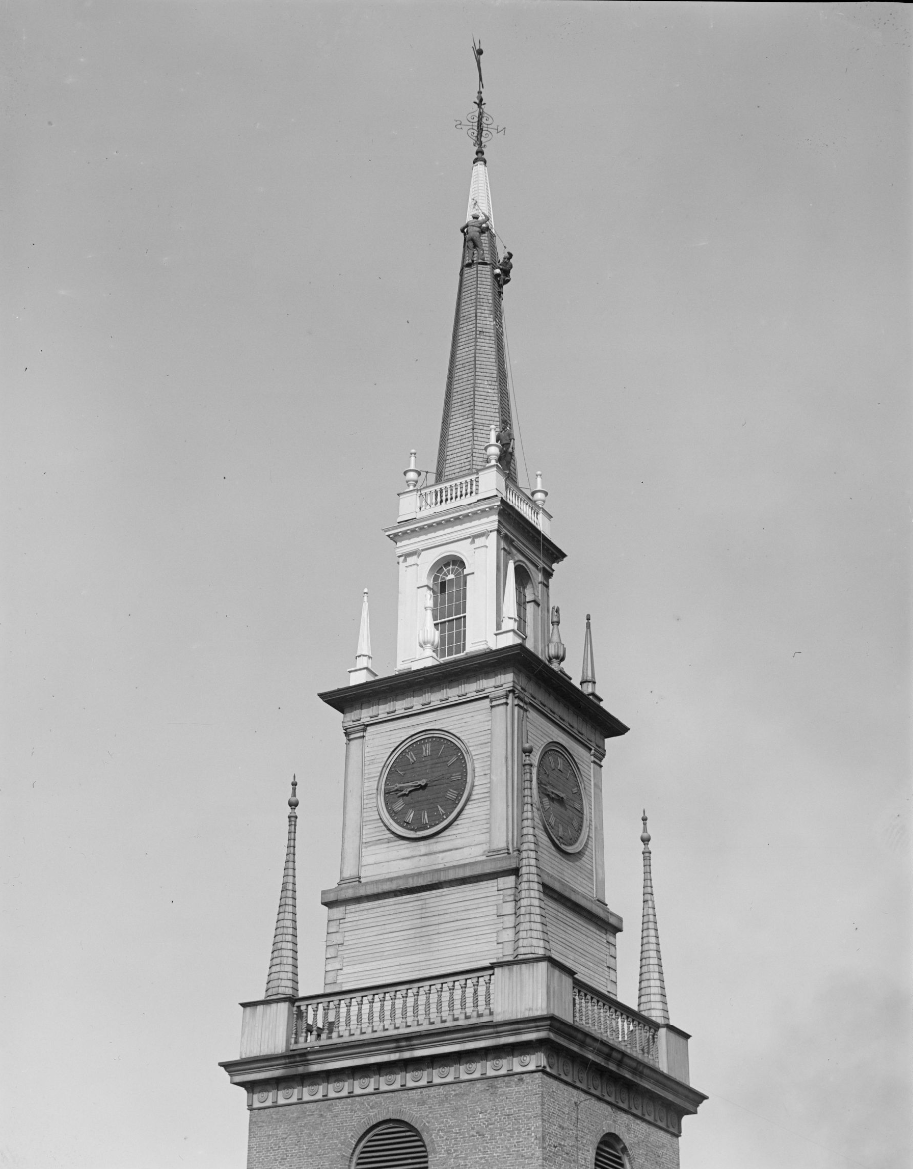
In October of 1804, Boston was struck by a ‘very violent gale’ that blew the wooden spire from Old North’s tower, destroying a house below. There was no salvaging it. Once again, church leaders appealed to members of the congregation and to community members throughout Boston and neighboring towns. By 1806, enough money had been raised to build a second wooden spire. This one was fifteen feet shorter than the original, and while it had similar windows and was topped by the original weathervane, other decorative elements were altered. This same year, Old North underwent a interior redesign as well, changing the location of the pulpit and the layout (and design) of the pews. Do these changes suggest that the early 19th century congregation thought of Old North not as a historic icon but simply as their church, which could and would be changed to reflect their time and taste?
Hurricane Carol
The second spire lasted until August 1954 when Hurricane Carol pummeled Boston. Spectators anxiously watched the spire teeter and sway until finally it fell across Salem Street and into Hull Street. The only damage was a small chunk dislodged from the masonry of a building on the corner of Salem and Hull.
Once again, only the weathervane survived.
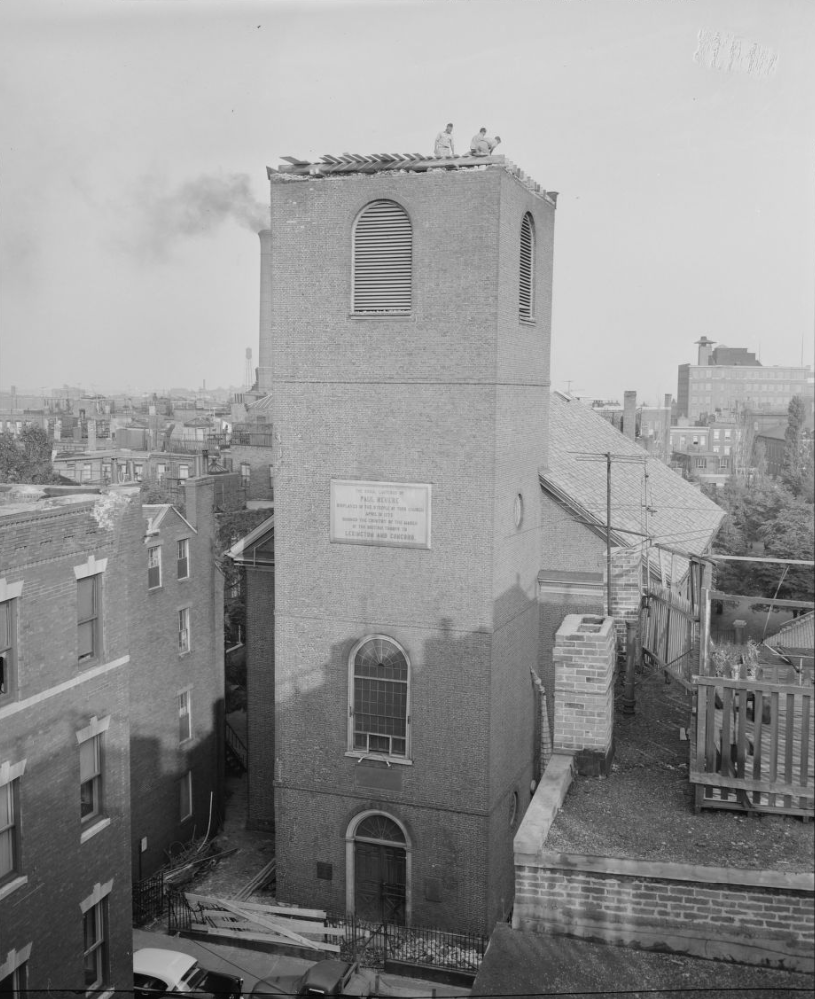
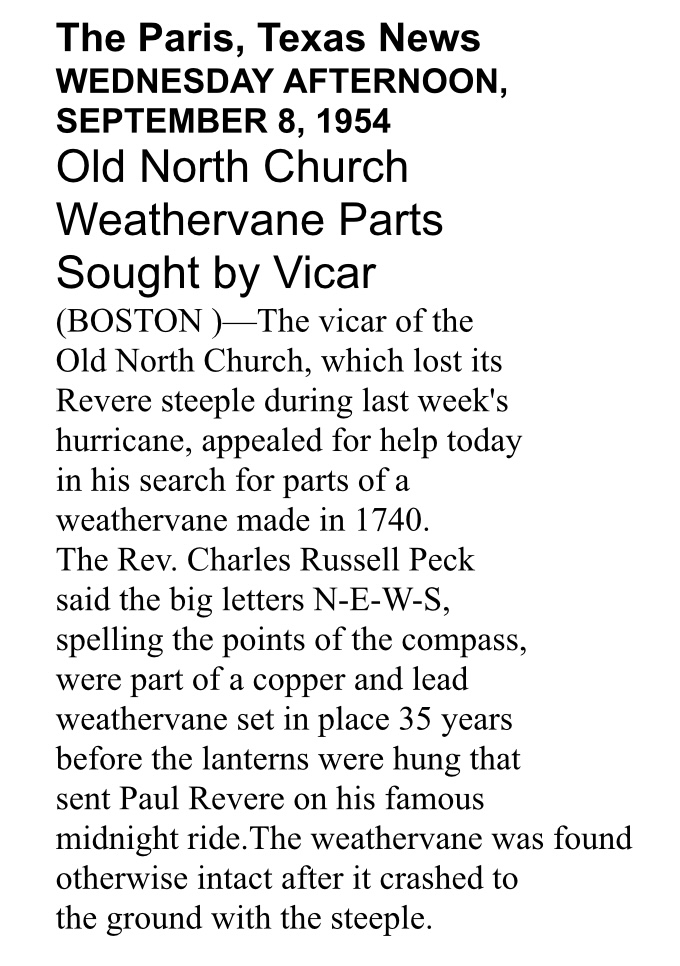
A North Ender’s Memory
“As the family story goes, while some of the locals took bits and pieces of the steeple as souvenirs, my uncle absconded with [a piece of ] the weathervane and convinced my dad to hide it in our apartment. Supposedly they stashed it in my bedroom. I was just a week away from turning eight months old at the time. For days the media put out the call for its return. My dad finally convinced my uncle that it was too hot to handle and should be returned. Late one night they carried it down to the waterfront, then made an ‘anonymous’ call to the police for its recovery. Every time I look up at the steeple I smile knowing that for a short while I slept in the same room with the weathervane.”
– Rep. Peter Petrigno, NH State Representative, former North End resident
Rebuilding the Steeple
Rebuilding Old North’s steeple became a national project, reflecting Old North’s national prominence as a symbol of freedom and of the American Revolution. Funds flowed in from across the country and from people of all ages.
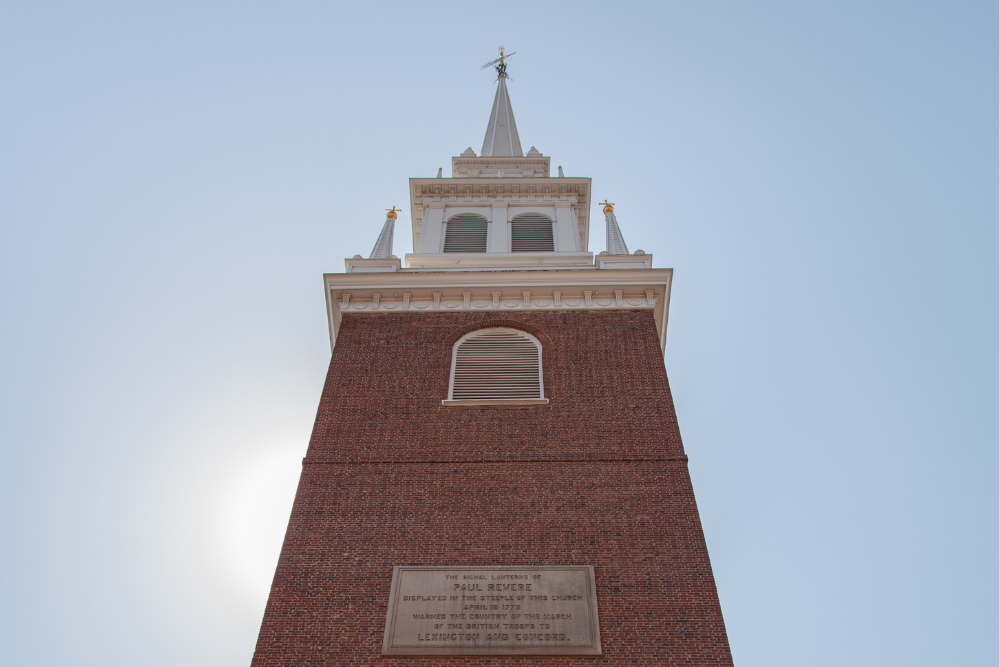
Collective Support
“While in the 4th grade, and living in Morocco, I collected money to support the Old North. I remember my father who also loved history, talking about the Old North, the battle at Lexington, the USS Constitution, and the values they represented… risk, teamwork, vision of a better country. Not long after, there was a drive to support the Old North and the USS Constitution. I volunteered to go door to door among the Americans to collect money. While I thought I did great, even if many others collected more than I did, it was the values my father expressed and how the role of the Old North built on those values that never left me.”
– Anne Bailey Berman, former Old North Foundation Board Chair
The Third Steeple
In October 1955, the third steeple, topped by Shem Drowne’s weathervane, was hoisted into place and secured with steel reinforcements. This time, the steeple was a deliberate replica of the original, consciously recalling the colonial identity and prominence of the structure. Old North’s steeple has become a visual evocation of the nation’s values, struggles, and transformation.
